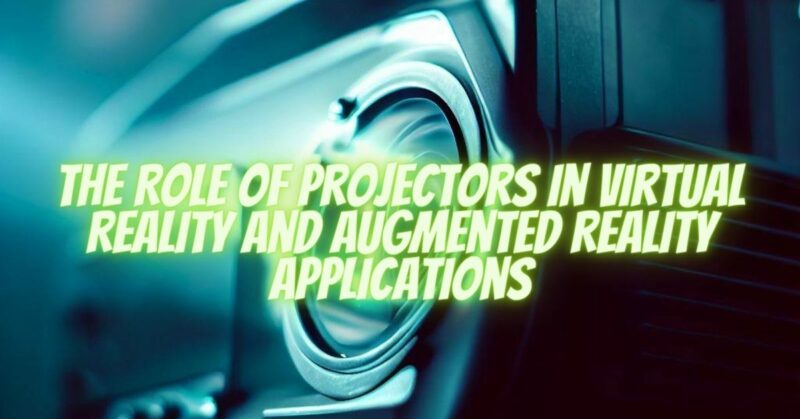Virtual Reality (VR) and Augmented Reality (AR) have revolutionized the way we experience digital content by immersing users in virtual environments or overlaying digital elements onto the real world. While headsets and displays are commonly associated with VR and AR, projectors play a vital role in enhancing these immersive experiences. In this article, we delve into the significant contributions of projectors in VR and AR applications, exploring their unique capabilities, challenges, and potential future developments.
- Immersive Projection for VR: Projectors in VR applications are used to create immersive virtual environments by projecting images or videos onto large screens or specially designed surfaces. By projecting visuals with a wide field of view, projectors enhance the sense of presence and immersion for users, creating a more engaging VR experience. Projection-based VR systems can provide a shared experience for multiple users and enable interactions with physical objects in the virtual space.
- Spatial Augmentation with AR: In AR applications, projectors are utilized to augment the real world by overlaying digital content onto physical surfaces. Projectors enable dynamic and interactive projection mapping, allowing virtual objects to be seamlessly integrated into the user’s environment. This spatial augmentation enhances visualization, storytelling, and interactive experiences in fields such as education, entertainment, architecture, and industrial design.
- Enhanced Collaborative Experiences: Projectors play a crucial role in enabling collaborative VR and AR experiences. By projecting visuals onto a shared screen or surface, multiple users can engage in synchronized immersive experiences, fostering teamwork, communication, and knowledge sharing. This collaborative aspect expands the possibilities for training simulations, virtual meetings, design reviews, and interactive presentations.
- Challenges and Considerations: Using projectors in VR and AR applications presents specific challenges and considerations. These include maintaining accurate alignment between the projected content and the user’s perspective, achieving high-resolution projections, managing image distortion, and dealing with ambient light interference. Overcoming these challenges requires advanced calibration techniques, optical corrections, and adaptive projection technologies.
- Projection Mapping and Object Tracking: Projection mapping techniques are employed in VR and AR to precisely align projected content with the physical environment, enabling realistic virtual object placement. Object tracking technologies, such as computer vision or sensor-based systems, facilitate dynamic projection mapping by continuously tracking and adjusting projections onto moving or deforming objects. These techniques enhance realism and interaction possibilities in AR applications.
- Future Developments and Advancements: The role of projectors in VR and AR continues to evolve with ongoing technological advancements. Innovations in projection technologies, such as laser projectors, higher resolution displays, and adaptive optics, promise improved image quality, brightness, and dynamic range. Additionally, research and development efforts are focused on compact, portable projectors and wearable projection systems to enhance mobility and user comfort.
- Bridging the Physical and Digital Worlds: Projectors act as a bridge between the physical and digital worlds in VR and AR applications. By blending virtual content with the real environment, projectors enable immersive experiences that seamlessly integrate digital information into our physical surroundings. This bridging capability holds significant potential in fields such as education, entertainment, design, healthcare, and more.
Conclusion:
Projectors play a vital role in enabling immersive and interactive experiences in VR and AR applications. They contribute to the creation of immersive virtual environments in VR and facilitate spatial augmentation and dynamic projection mapping in AR. Overcoming challenges and advancements in projection technologies will continue to enhance the role of projectors in bridging the gap between the physical and digital realms, shaping the future of immersive content consumption, collaboration, and visual storytelling.


